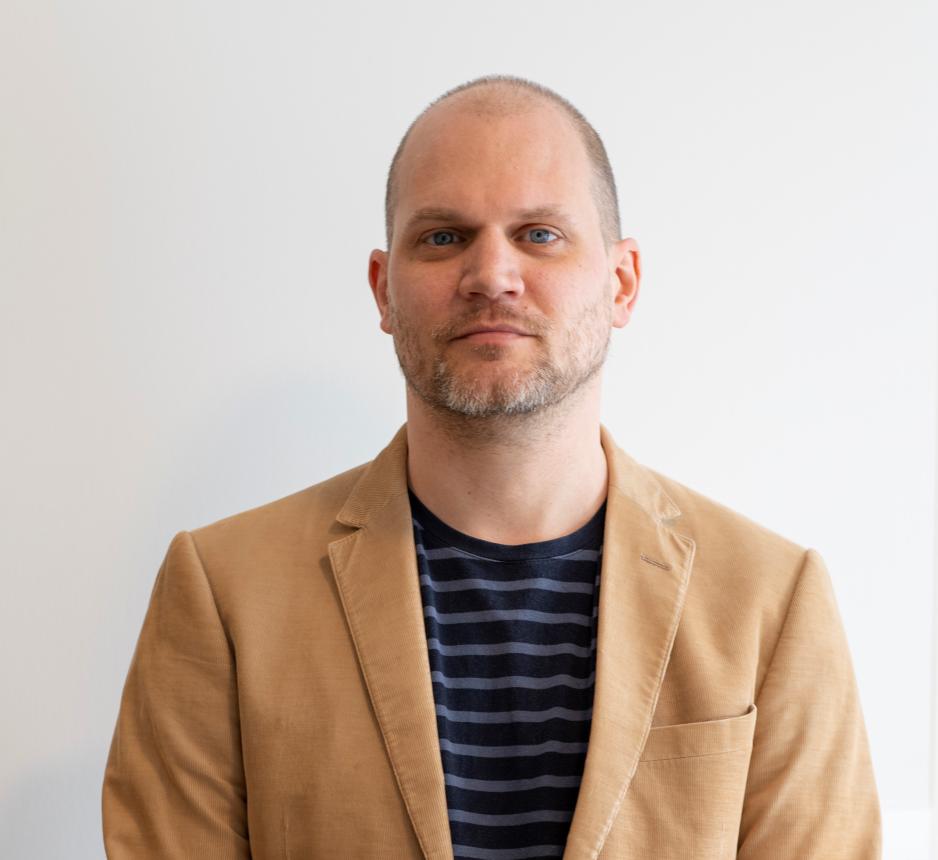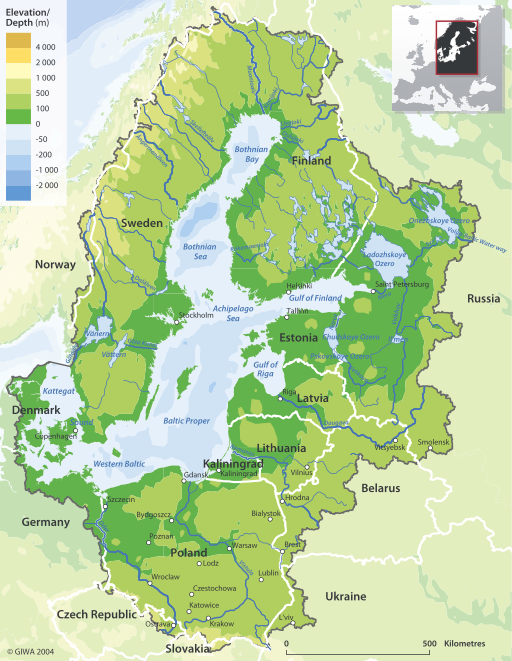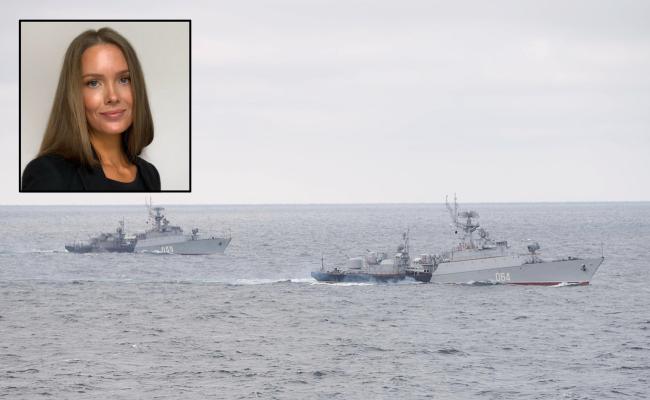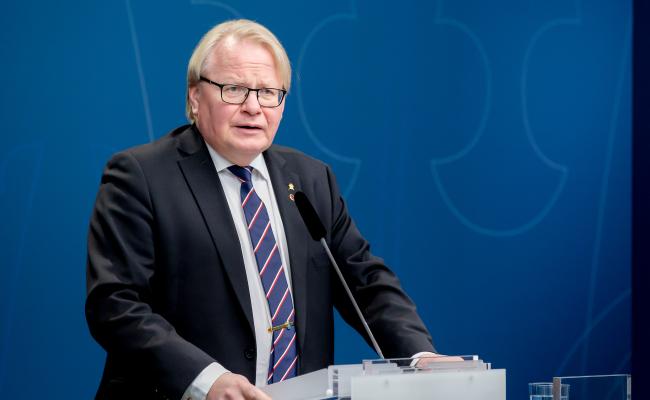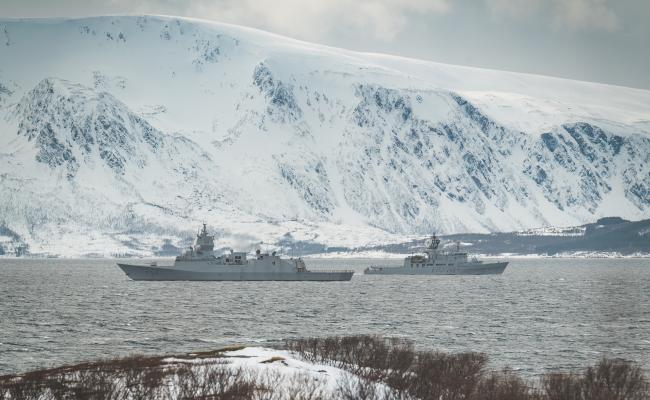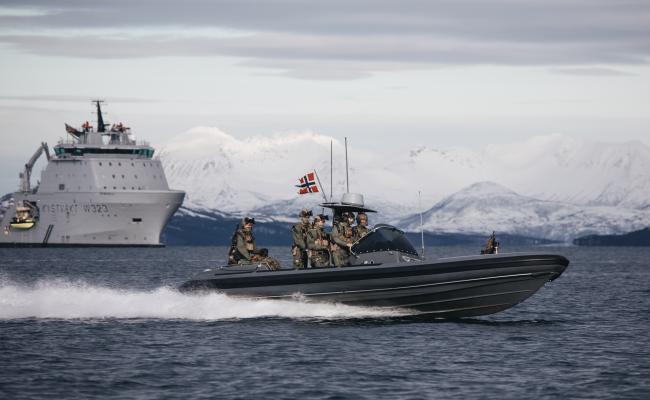Conflict Spillover from Ukraine to the Baltic Sea and the Arctic
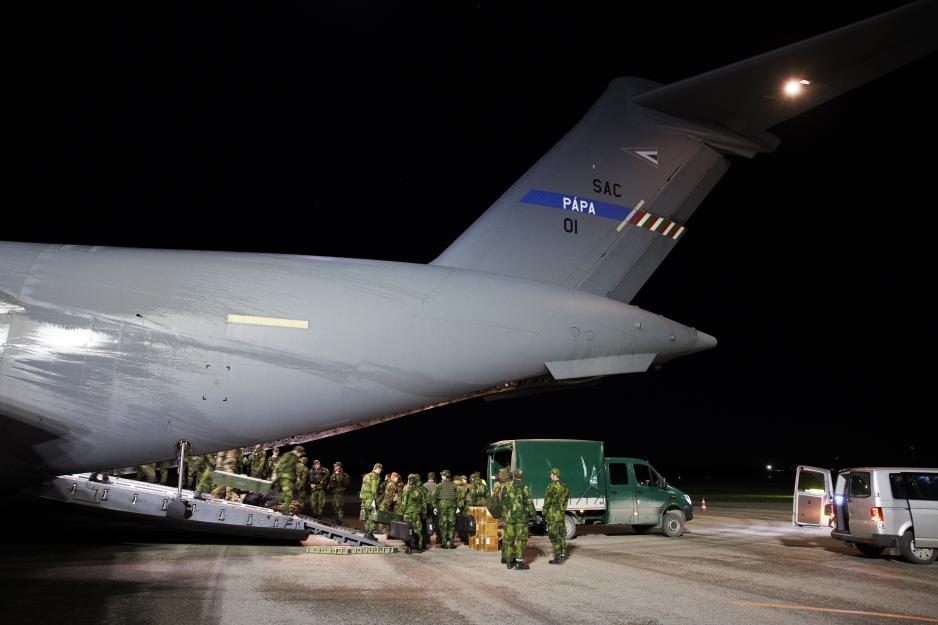
The Swedish Armed Forces’ operative preparedness force on arrival Gotland on 14 January 2022. The island’s defense was reinforced with personnel from the North Bothnia regiment. (Photo: Emy Åklundh, Swedish Armed Forces)
In the currently strained security situation, the Arctic is connected to the militarily tense Baltic Lake region. The conflict between Russia and the West currently has ripple effects in North European waters and will also have such effects even further north, argues Swedish military analyst.
Russia and the West keeps up its increasingly strong military posing in each other’s border areas in light of the tense Ukraine conflict.
For the time being, the Baltic Sea constitutes a significant field of tension, with several Arctic actors. Both Russia on one side, and a.o. Sweden and Denmark on the other, mobilize their militaries in various ways in this area.
The Baltic Sea is a small nearly landlocked sea in Northern Europe, located between Sweden, Finland, Russia, Estonia, Latvia, Lithuania, Poland, Germany and Denmark.
Two weeks ago, there was increased Swedish and also Arctic reinforcement of Gotland in the face of increased Russian marine activity. Swedish ministers spoke of the security situation on Sweden’s doorstep as serious and did not exclude the possibility of a future attack against the country. NATO also sent a Dutch warship to the Baltic Sea to demonstrate presence and calm in particular its Baltic allies.
New demonstrations of force
The context was, then as now, characterized by the deployment of rather large Russian forces near the Ukrainian border, tough negotiations about Russian security demands towards the NATO and USA, and a new low in the relationship between post-Soviet Russia and the West.
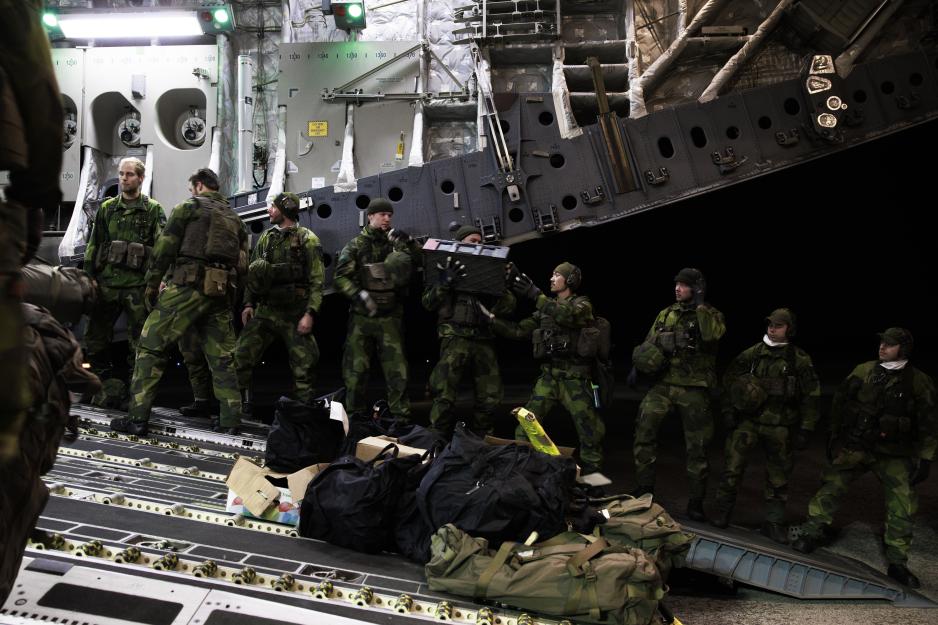
The Swedish Armed Forces’ operative preparedness underway to Gotland in 2020, escorted by air and sea forces during a preparedness initiative in the Baltic Sea. (Photo: Antonia Schlstedt, Swedish Armed Forces)
Last week, reports came about new demonstrations of force in the Baltic Sea:
Russian warships from the Baltic Sea Fleet commenced Russia’s extensive marine exercise in January and February, the Russian Ministry of Defense announced. Last week, High North News wrote about the marine exercise that are to take place both in the North as well as in the world’s oceans.
NATO is stepping up its military presence along the eastern flank, amongst others at sea and in the air in the Baltic Sea region and the Baltic countries. Here, Denmark participates with a frigate and four fighter planes, according to an alliance press release.
The USA has 8,500 soldiers in preparedness for potential deployment in Europe on short notice. In addition, Great Britain is considering offering Nordic NATO members troop reinforcements, Dagens Nyheter reported.
Norway will not contribute with forces to NATO’s eastern flank, said PM Jonas Gahr Støre to Norwegian broadcaster NRK the same day.
“Norway shall be the Alliance’s eyes and ears in the north”, Støre emphasized.
Consequence of worsened relation
“The Swedish military mobilization in the Baltic Sea happened in part because of deviations from the normal situation in that sea area, but it was above all else a consequence of the tension around Ukraine and the worsened relationship between Russia and the West”, says Military Analyst Jonas Kjellén at the Swedish Defense Research Institute to High North News.
One change from the normal was that the number of Russian operative landing vessels in the Baltic Sea went from one to six in a very short period of time. Three of these belong to the Russian Baltic Sea Fleet, which has bases in Baltisk in Kaliningrad and Kronstadt in the Gulf of Finland. The other three vessels belong to the Russian Northern Fleet and sailed in via Kattegat.
“The increase in the number of landing vessels was remarkable, as it is “off season” for such major Russian relocations. With these additional vessels Russia’s capacity to move and land troops in other places than the Baltic Sea was significantly strengthened.”
As a response, Sweden strengthened its military presence on the island of Gotland, some 90 kilometers from the Swedish Baltic Sea Coast. This is the largest island in the Baltic Sea and has major military strategic significance, with its central location in this Sea.
Resembles the Cuba crisis
“Without the pointed fronts between Russia and the West, the Swedish reaction to more Russian landing vessels in the Baltic Sea would hardly have been the same”, argues Kjellén.
The Northern Fleet’s landing vessels withdrew only a few days after the Swedish mobilization.
This unannounced Russian military reinforcement initiative in the region can be seen as a signal to the USA and NATO, in other words, as a moving of pieces in the negotiations between Russia and the West, according to the military analyst.
“This is a negotiation game with parallels to the Cuba crisis of 1962. Who shall give in and step back?”, he says.
The current Russian exercise move at sea in the north may also be read as a piece in the negotiation game, Researcher Ina Holst-Pedersen Kvam argues in an interview with High North News.
Amongst the Russian security requirements, the following may be of particular relevance to the Baltic Sea: The demand about a halt in NATO’s expansion to the east also includes Sweden and Finland. Furthermore, Russia does not want either NATO nor itself to deploy forces and wapons in countries where they did not have such presence prior to the spring of 1997.
This includes a demand that the Alliance withdraw its forces from a.o. the Baltic States and Poland.
The demand about and end to military exercises near the border between NATO and Russia also affects the aforementioned Baltic Sea countries and Norway.
The Russian requirements also demand that Sweden and Finland as partnership countries shall not be able to receive military support from NATO, according to Dagens Nyheter.
In 2016, the Swedish parliament Riksdagen adopted a host country agreement with the Alliance that simplifies the reception of such support. Accepting the Russian requirement would “devastate” the foundation for Swedish security cooperation, says Swedish Defense Chief Michael Bydén to the paper mentioned.
NATO has rejected the two first-mentioned requirements and suggests a.o. mutual orientations about military exercises and nuclear weapon policies within the framework of the NATO – Russia Council.
Connecting the Arctic and the Baltic Sea
The Arctic and the Baltic Sea are closely watched by the Nordic-Arctic four states Sweden, Finland, Norway and Denmark, according to a policy brief from the Norwegian Institute of International Affairs (NUPI), issued last month.
The countries stress in particular these two regions in their strong current focus on immediate security and defense challenges, according to NUPI. All four also point directly to Russia as a security threat, with the annexation of the Crimea in 2014 as the main reference.
Early January, the Swedish Defense Minister Peter Hultqvist said that Sweden is part of a “military strategic whole” that encompasses both the Baltic Sea and the Arctic. His statement came in relation to Sweden’s recent re-opening of six military divisions, with the Västernorrland Regiment as the fifth in the series, as mentioned by High North News.
“I agree with Hultqvist’s description”, Kjellén says and adds:
“Sweden is a member of the EU and no longer refers to itself as neutral, but rather as alliance-free. The relationship between Russia and the West, including Northern Europe, is generally rather poor and has consequences in a geographic overall picture, be it for Arctic cooperation or gas exports from Russia to the EU. Everything is connected.”
The relationship between Russia and the West is by and large rather poor, which has broad repercussions.
Kjellén’s colleague at the Swedish Defense Research Institute (FOI), Head of Research Gudrun Persson, has also tied the Arctic and Baltic Sea area together within a context of the Ukraine conflict. This conflict affects the entire security situation from the Kola Peninsula via the Baltic Lake and down to the Black Sea, Persson said to SVT during when weekend at which Gotland was militarily strengthened.
Around the same time, Norwegian researcher Andreas Østhagen pointed out to Norwegian broadcaster NRK that the Baltic Sea region and the High North also are important “cold fronts” towards the West, seen from a Russian perspective.
“To Russia, the front against NATO and the West is not only in southern Europe. It is also in the Baltic Sea and in the High North. There is a connected line here that Russia wants to defend, if not challenge”, Østhagen remarked.
He is a senior researcher at the Fridtjof Nansen Institute and at the High North Center for Business and Governance at Nord University.
Conflict spillover into the Arctic
The tension between NATO and Russia around the Ukraine can affect the Arctic, researchers said to High North News in a recent interview. If the diplomatic track between the West and Russia were to fail, the conflict may spill over even more into the High North, argue Karen-Anna Eggen at the Norwegian Defense University College and Julie Wilhelmsen at NUPI.
Their Swedish research colleague Kjellén shares their analysis. Russia and the West’s high-strung conflict about Ukraine has far-reaching consequences, he argues.
“The relationship between Russia and the West is by and large rather poor, which has broad repercussions. Geographically speaking, Ukraine is the current hotspot, though all small and medium-sized countries in particular in Northern Europe and the Baltic region are affected by the deteriorating security policy situation, and this is where the Arctic enters the picture”, the military analyst says.
A key point in the question about potential increased conflict spillover from the tension line from Ukraine to the Arctic is how the USA and Russia will act in the Arctic region in the coming months and years, he says.
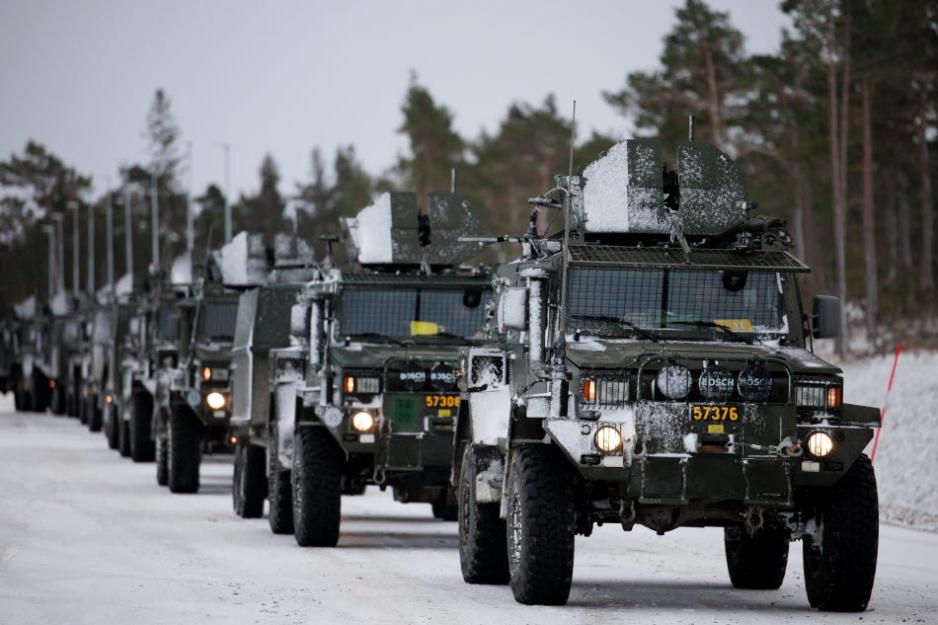
Terrain vehicles during the strengthening of Gotland. (Photo: Emy Åklundh, Swedish Armed Forces)
Potential negative side-effects of increased US presence in the High North when it comes to Russia is the topic of a High North News interview with Professor Tormod Heier at the Norwegian Defense University College last December.
The Arctic itself was, as is well known, a high-tension area between the superpowers USA and the Soviet Union during the Cold War. From the 1990s onwards, military low-tension and cooperation became the new hallmarks of the region.
Both the old arch enemies and the other Arctic states have stressed their shared interests in the region and kept conflict issues from other areas at an arm’s distance.
Since the end of the Cold War and through the 1990s, the Baltic Sea region was developed as a cultural, political, and economic cooperation project.
Fear for Arctic cooperation
Despite Russian military re-building in the Arctic since 2008, as well as increased armament on the western side since the conception of the Ukraine conflict in 2014, the Arctic countries have nevertheless maintained their line about keeping hard security issues and their accompanying division out from Arctic cooperation forums.
Kjellén now believes that the current strong military tension between Russia and in particular Arctic NATO countries will spill over into the Arctic dialogue of cooperation.
“Continuing the exceptional cooperation taking place in bodies like the Arctic Council may on a general basis become more troublesome. At least I find it hard to imagine that the current security political situation will not be reflected in an Arctic cooperation context.”
At the same time, he points out that there is a clear difference between the Soviet and the current Russian interest in the Arctic.
“While the Soviet Union considered the Arctic an instrumental area for nuclear deterrence, the current Russia is focused on the region’s vast natural resources and the new transportation routes in the North. Moscow’s military re-armament also goes further east now, into the Russian Arctic along the Northern Sea Route.
We are both very worried about Russian military armament towards Ukraine.
All Baltic Sea states to Norwegian exercise
In March, there will be the Cold Response 2022 exercise, the largest allied military exercise in Norway under Norwegian command since the Cold War. According to the plan, some 35,000 soldiers will participate.
Finland, Sweden and 23 NATO countries have confirmed their participation, including all eight western Baltic Sea states, and also all the western Arctic states, with the exception of Iceland.
Out of the seven western states in the Arctic, Sweden and Finland are the only two that are not NATO members. At the same time, these have since long had extensive cooperation with the Alliance, based on partnership agreements.
While Finland borders directly onto Russia, Sweden and Russia only share border at sea, in the Baltic Sea. Through recent developments in the Baltic Sea, Finland has monitored events closely and maintained its high military preparedness.
The American carrier USS Harry S. Truman, which is expected for Cold Response in March and April, is currently on patrol in the Mediterranean along with other allied vessels under NATO command. The fact that a complete American fleet group operates under NATO command has not happened since the Cold War, the Alliance states.
Frequent meetings
On Wednesday 2 February, Swedish and Finnish foreign and defense ministers are gathering in Stockholm for talks about the security situation in Europe, according to the Swedish MFA. Last week, the two foreign ministers met with NATO’s Secretary-General Jens Stoltenberg in Brussels.
Norwegian Foreign Minister Anniken Huitfeldt visited Helsinki last week, for talks with her Finnish counterpart Pekka Haavisto. The two discussed the security situation in and around Ukraine, as well as European security issues. The meeting was also arranged due to the tense situation, the Ministry of Foreign Affairs writes in a statement.
This was Huitfeldt’s first-ever visit to Helsinki as a foreign minister. “We are both very concerned about Russian military build-up towards Ukraine”, she wrote on Twitter after the meeting.
On Wednesday 2 February, Huitfeldt will have a telephone conversation with Irish Foreign Minister Simon Coveney, according to the Ministry of Foreign Affairs. Last Monday, Ireland protested against announced Russian marine exercises off the Irish coast, in international waters.
Also read
This article was originally published in Norwegian and has been translated by HNN's Elisabeth Bergquist.


